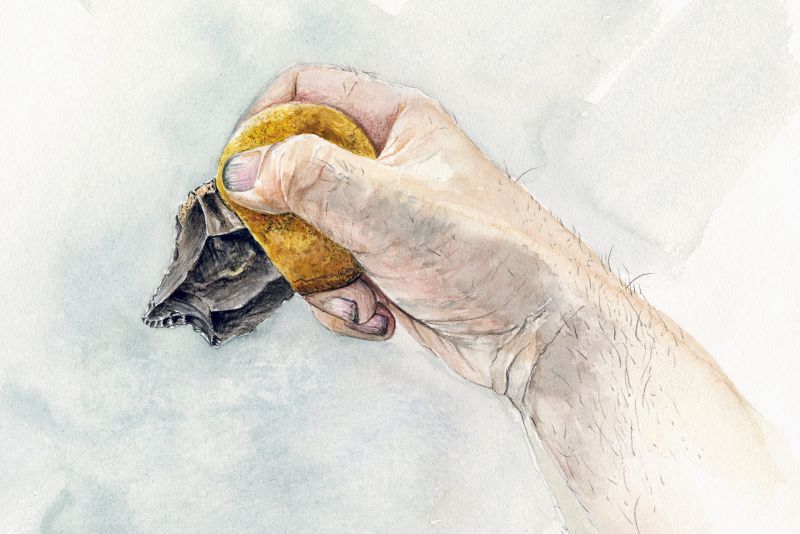MI weekly selection #548

Illustration: Daniela Greiner
Dinosaur species may have crossed sea to find Africa
Fossils in Morocco reveal a previously unknown duckbill dinosaur species, Minqaria bata, which is anatomically similar enough to duckbill species found in Europe to suggest that the pony-size creatures swam or floated across the Tethys Sea and diversified quickly into at least three species in North Africa. The animals’ elaborate head crests contained long nasal passages capable of hornlike noises, which, coupled with their larger-than-typical brains, point to noisy, social animals.
Full Story: PhysOrg
Snakes evolve around 3 times faster than lizards
Snakes’ evolution outpaces that of many other animals, and researchers suspect that can be traced to a cluster of events in a short enough time that they appear to be one large evolutionary shift, also called a singularity. Researchers detail this shift in perspective on evolution by building one of the most detailed evolutionary trees of lizards and snakes, with existing data and previously unknown genetic sequences from about 8,000 reptile species, finding that snakes have evolved around three times faster than lizards in the past 70 to 100 million years.
Full Story: Popular Science
Old mercury deep in the ocean accumulating in tuna
Levels of mercury in the atmosphere have fallen dramatically in the decades since governments began requiring emission controls on coal-fired power generators, but mercury levels in tuna have been generally unchanged since 1971. Mercury emitted decades or even centuries ago remains deep in the subsurface ocean and mixes with the surface ocean, where tuna feed.
Full Story: BBC
Quick, complex thought may originate from ancient virus
RNA from an ancient virus helped trigger humans’ and other jawed vertebrates’ production of myelin, part of a coating that accelerates nerves’ electrical signals, according to a study in Cell. The event could have enabled quick thinking and complex brains to evolve by turning on myelin production, which seems to have developed independently in each species.
Full Story: Science News
Glue likely made by Neanderthals for tools
Neanderthals likely engineered handles for stone tools by mixing two natural compounds into a kind of glue between 120,000 and 40,000 years ago, suggests an analysis of the tools, which were discovered at a French site around 1910. Researchers re-created the glue with the same materials, bitumen and ocher, noting that the distances required to find the compounds and the tools’ design shed light on complex thinking and capabilities.
Full Story: CNN